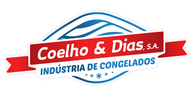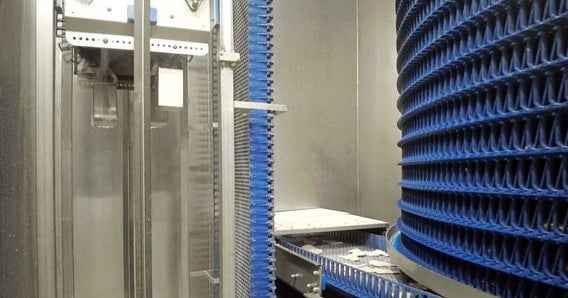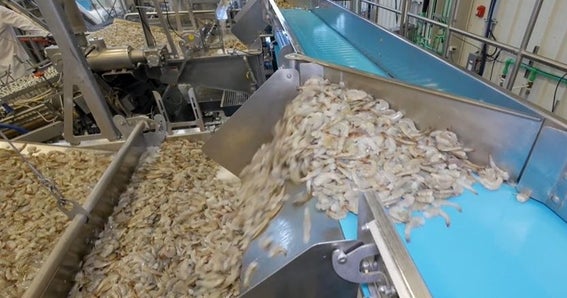Portuguese Seafood Plant saves €145,000 Per Year By Upgrading Glazers With Intralox Belting
Case StudyCoelho & Dias
Products
Modular Plastic Belting
Industries
Fish and Seafood

Customer Objectives
Coelho & Dias, a Portugal-based seafood processor, was experiencing sticking issues with their glazers. Glazing is the application of a protective layer of ice on a frozen product—in this case, fillets of white fish—by spraying the product with below-freezing-temperature liquid or by submerging the product in the liquid. The fillets repeatedly stuck to the previous plastic belts installed on Coelho & Dias’s equipment, causing daily product loss. Having dealt with the sticking issues since those belts were installed, they approached Intralox looking for something different.
Intralox Execution
Coelho & Dias chose to work with Intralox based on our previous experience with other food-industry OEMs. They decided first to upgrade the belting on one of their incline glazing conveyors to Intralox® Series 900 Flush Grid Nub Top™ belting in acetal, which so greatly improved their issues that they wanted to upgrade the other three glazing lines with the same belt. However, we recommended and installed S1600 Raised Open Grid belting in PK (Polyketone) material, which is more impact, chemical, and abrasion resistant than acetal.
Results
Previously, Coelho & Dias had a total throughput of 22 T (20 t) per day. Combined, the four glazers upgraded by Intralox saw product yield increase by 485 lb (220 kg) per day. The customer says this number, which equals 1.2% of their total daily production, represented a huge improvement in production capacity. They valued the product gained at €550 per day, a rate yielding €145,000 in savings per 265-day production year.
We had four glazers originally equipped with other plastic belts, and issues with sticking continued to cost us significant product yield. We retrofitted just one glazer with Intralox, and it worked so well that we quickly decided to upgrade the other three.
Amaral Gomes
Coelho & Dias Production Manager



